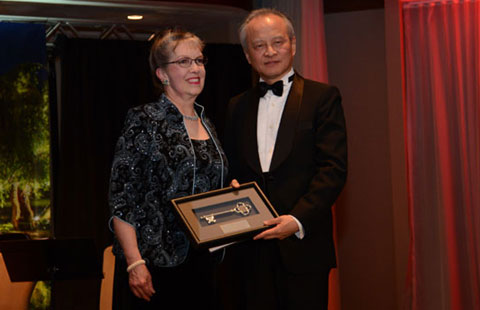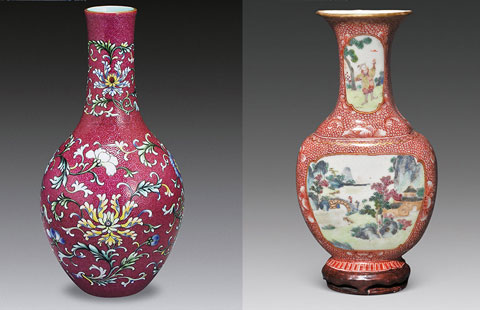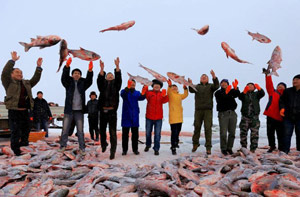Making East Asia peaceful, prosperous
Updated: 2014-10-16 07:39
(China Daily)
|
||||||||
There is still hope of international cooperation and regional stability in East Asia despite the region being haunted by escalating tensions. To achieve that, the region's countries have to build mutual trust and should respect each other's sovereignty, political independence and national dignity.
Despite the ideological and institutional differences, all East Asian countries should fulfill their obligations and build mutual trust. This means all the countries in the region have to respect common interests without interfering in each other's internal affairs.
Ri Yong Nam, a researcher at the Postgraduate Research Institution of Social Sciences, affiliated to Kim Il-sung University, DPRK
Whether China seeks global activism or not in its foreign policy depends on the overall stability at home. In other words, China has to solve its own problems before tackling global issues.
Since assuming office in 2012, top Chinese leader Xi Jinping has been making consistent efforts to deepen the reforms in the country, eliminate corruption and curb inflation. This will help China gain a positive image in the eyes of the international community.
Given the increasing historical and territorial problems in East Asia, China is now using a more active diplomacy in the region to show full respect to its neighbors - the Conference on Interaction and Confidence Building Measures in Asia held in Shanghai and Xi's recent visit to South Asia are apt examples of this diplomacy.
China-ROK ties are key to the stability of East Asia, but they are facing a big challenge owing to some global developments - which are different from normal disputes - such as the disagreements over the Free Trade Agreement. Therefore, to ease the tensions in the region and "seek common ground while shelving differences", it is absolutely important that the region's countries hold regular, routine dialogues.
Lee Heeok, professor of the Department of Political Social Science and Diplomacy at Sung Kyun Kwan University, ROK
East Asia has become the world's largest economic zone. But it has been undergoing a structural shift led by advanced economies, particularly the United States, since the end of World War II. Thanks to the division of labor in the manufacturing and service sectors, a new wave of growth is being witnessed by the region's emerging economies. However, new challenges are just round the corner. For one, China's powerful rise has seemingly spawned the problem of commercial trade choices. Since the US-led Trans-Pacific Partnership Agreement would still be used by Washington to exercise control over trade rules in East Asia, the US is unlikely to yield the leadership to China, even though the latter is expected to soon become a bigger economic power.
Besides, this structural shift has prompted a politico-economic change in the region. But how a TPP signatory like Japan can reduce the political and economic risks accompanying the one-sided dependence on the Chinese economy remains uncertain. Given that Japan, Vietnam and the Philippines have territorial disputes with China in the seas, the above issues have to be resolved, paving the way for peace and prosperity in the region.
Hitoshi Hirakawa, professor at Kokushikan University, Japan
Russia is turning toward East Asia, which will benefit its economy and improve the quality of life of Russians in the Far East. The launch of effective trans-border cooperative projects in the Tumen River area is definitely the best available tool for Russia to integrate with its Asian neighbors.
The location of the Tumen River area makes it a solar plexus for Russia's Far East, even for a large part of Northeast Asia. The Trans-Siberian Railway and the Northern Sea Route both start here. Deep-water seaports in Southern Primorye operate all year round and handle two-thirds of exports and almost all imports in East Russia. Moreover, relatively warm seawaters to the south of Vladivostok could boost tourism.
Among all approaches of integration, cooperation in natural resources extraction (especially oil and gas), transport and logistics, and eco-tourism can be achieved at relatively low costs. Of course, such a project requires time, funds and skilled workforce to become a success.
Sergey M. Smirnov, director of the Center for Maritime International Studies, Admiral Nevelskoy Maritime State University, Russia

 Music at her fingers
Music at her fingers
 Across America Over the Week (Jan 16 - Jan 22)
Across America Over the Week (Jan 16 - Jan 22)
 Spend Chinese New Year in style
Spend Chinese New Year in style
 Ili river valley becomes a popular destination for swans
Ili river valley becomes a popular destination for swans
 Philip Ma: from scientist to businessman
Philip Ma: from scientist to businessman
 Birmingham's Spotlight on China dinner
Birmingham's Spotlight on China dinner
 How to distinguish doucai, wucai, Famille-rose and enamel porcelain
How to distinguish doucai, wucai, Famille-rose and enamel porcelain
 Xinjiang lake in bumper fishing season
Xinjiang lake in bumper fishing season
Most Viewed
Editor's Picks

|

|

|

|

|

|
Today's Top News
Houston's SW Chinatown
China to focus on reforms, opening of capital market
Slowdown brings new risks to banks
Trade group calls for BIT
Market status for China is 'political' issue
Birmingham's Spotlight on China dinner
Bank takes renminbi-clearing seriously
Traditional Garb
US Weekly

|

|







